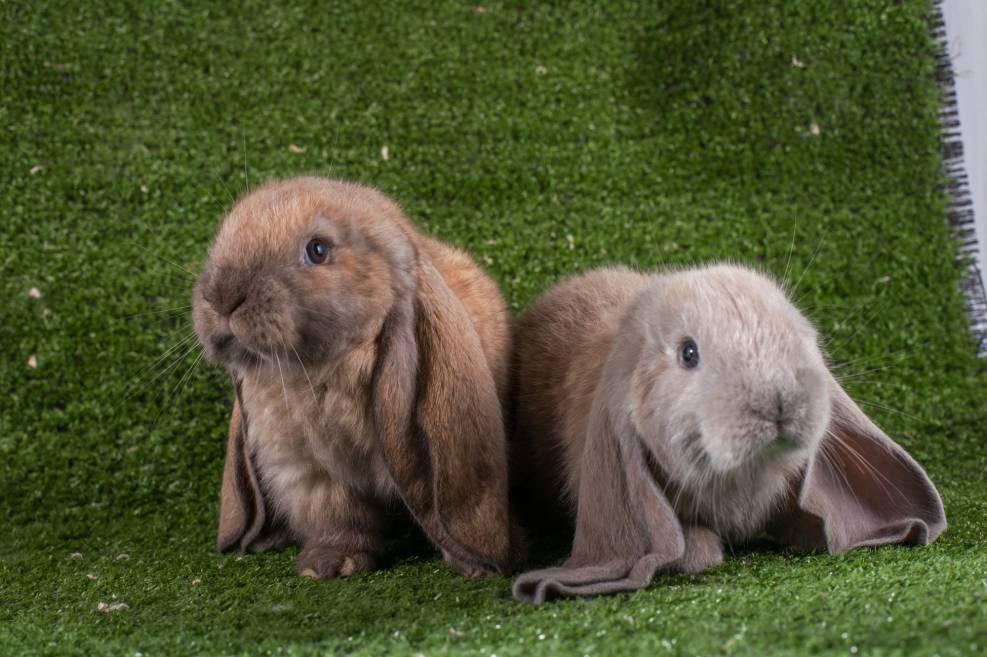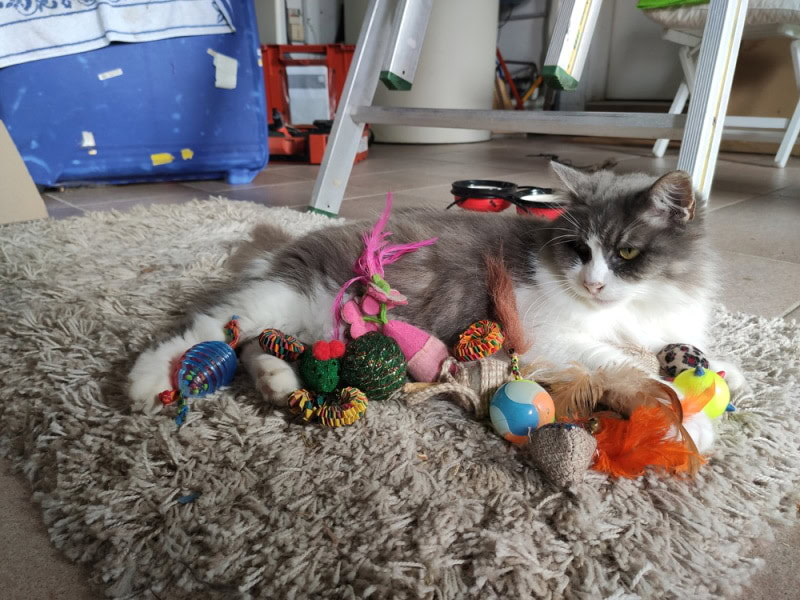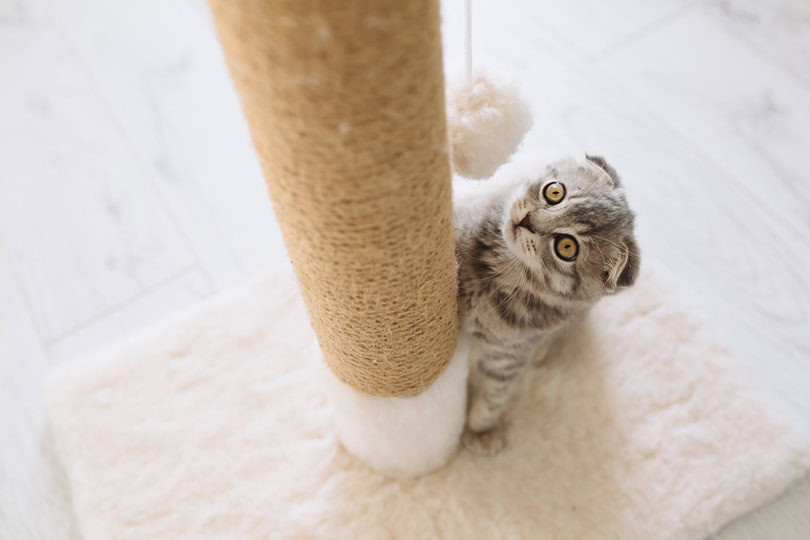VET APPROVED

The information is current and up-to-date in accordance with the latest veterinarian research.
Learn more »Click to Skip Ahead
Rabbits are fun, loving fur balls that never fail to entertain their owners with their crazy antics. And when you have the pleasure of sharing your life with one of these touching little mammals, it is normal to wonder if they would be happier with a companion. The simple answer is yes because rabbits are gregarious animals that naturally live in groups and benefit from social companionship.
However, a lone rabbit won’t necessarily be miserable. Still, you will need to compensate for the lack of a companion by devoting a lot of time and attention to your rabbit. In addition, another animal, such as a dog, cat, or even a guinea pig, would not be a great companion for your rabbit. This is because bunnies behave and communicate in very different ways, so if they are kept with an animal of another species, they will not understand the behavior of the other and will, therefore, not be ideal companions.

Why Do Rabbits Need a Companion?
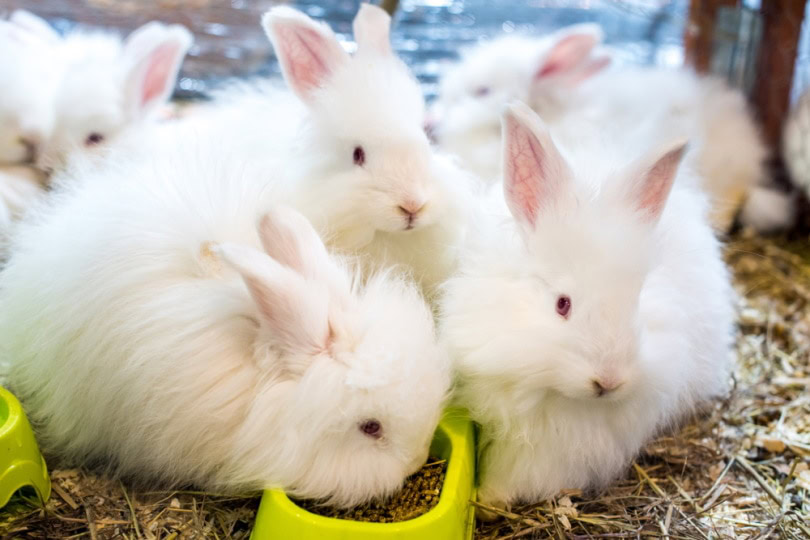
Like any animal, rabbits have social needs; if not met, they can lead to behavioral issues. Because, unlike the dog or the cat, the rabbit is not a predator but prey. This position in the food chain induces particular behaviors.
On the one hand, living with other rabbits and sharing the same habitat is reassuring and stabilizing for these fearful little creatures. This is why, in their natural habitat, rabbits prefer to stay in groups, even outside their burrows, because they are able to perceive a possible danger better. Additionally, rabbits tend to cluster together to sleep. They adopt relaxed positions more easily (hind legs to the side or in line with the body or lying on their side) when sleeping close to each other. A rabbit that sleeps alone, isolated from its congeners, will sleep in a position of alert, without completely closing its eyes, at the risk of being devoured by a potential predator.
On the other hand, if you like rabbits, you will understand and appreciate them better by observing their behavior while interacting with a mate. Allowing your little bunny to live with another rabbit is, therefore, an essential element for his well-being, and it also allows you to gain a better insight into the richness and depth of communication between rabbits.
What Happens When a Rabbit Gets Lonely?

Common signs of a lonely and sad bunny include the following:
- Attention-seeking behavior. If your rabbit chews on his cage bars, furniture, or your fingers, he might be trying to get your attention. If he pokes you with his nose and nibbles you, it usually means he wants you to stroke or play with him.
- Destructive behavior. While digging and chewing are natural rabbit behaviors, loneliness or boredom can make them more intense or misdirected. A rabbit left alone too often might start chewing carpets, walls, or furniture more aggressively. This is usually a sign of frustration or unmet mental stimulation needs.
- Signs of stress or withdrawal. Some rabbits become depressed when left alone for too long. They isolate themselves from their humans and refuse to interact, even when asked. A depressed rabbit may also hide or refuse to come out of its cage. He may not respond when you try to stroke or play with him. Additionally, a rabbit that feels lonely may begin to overgroom, pull out their fur, or even develop health issues related to chronic stress, such as gastrointestinal stasis.
Note: Call your veterinarian if you notice one or more of these signs, as they can be underlying symptoms of an illness.

How To Introduce a New Companion to Your Rabbit
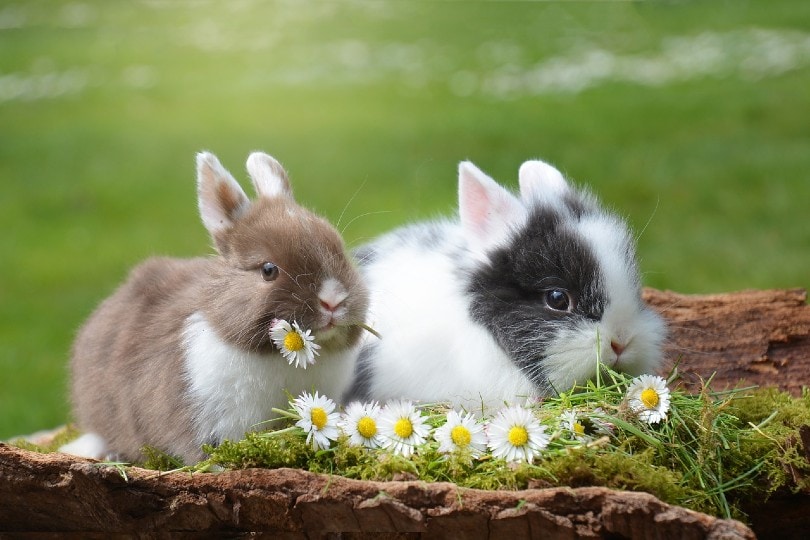
You’ve finally decided to adopt a new companion for your little bunny to make him feel less alone. While this is a great idea, be aware that rabbit cohabitation won’t be smooth in the early days (unless you’ve adopted two baby rabbits together).
Here are some tips for facilitating cohabitation between two rabbits:
Allow Time
Introducing a new rabbit is not something that can be rushed. You’ll need to be available to supervise gradual interactions over the course of several days or even weeks. Rabbits are social but also territorial animals, and bonding them safely takes time and patience.
It’s also important to remember that two rabbits mean double the cleaning—more cages to manage, more food and water to replenish, and more space to keep tidy. Beyond the practical side, you’ll also need to spend quality time with both rabbits to ensure their social needs are being met individually and as a pair.
Increase The Available Space
If you plan to adopt a second rabbit, it is essential to opt for a larger cage or a larger enclosure. Indeed, two rabbits can live together, but only if the space they have is large enough for them to maintain a minimum of privacy.
Choose The Sex
Although the character is important for a successful relationship between two rabbits, gender can also make a difference. Therefore, it is generally recommended to opt for a male and a female; however, sterilization is necessary in both cases.
Note that age does not matter. However, it is best to choose two rabbits of similar ages so that they have similar energy levels and roughly the same life expectancy. This will help them bond more easily.
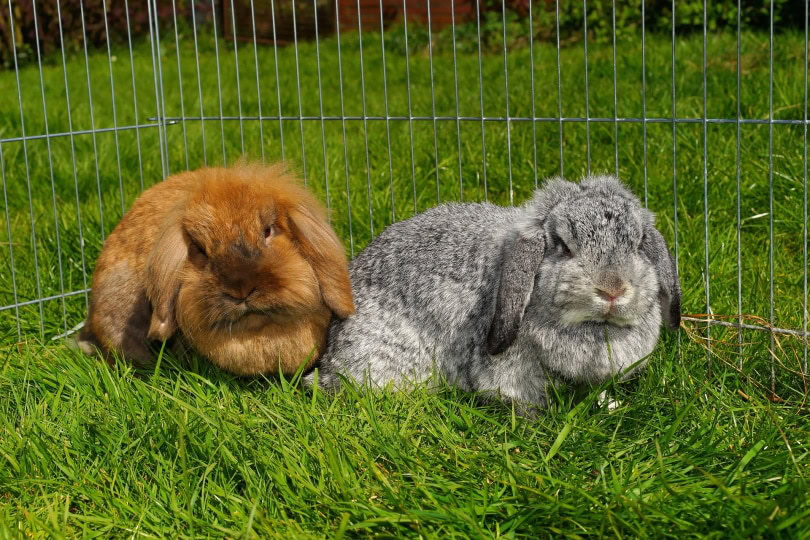
Do Not Rush The First Meeting
The rabbit is a territorial animal. For this reason, when it is time for introductions, do not place your new rabbit directly into your other rabbit’s cage. The latter could quickly be aggressive.
Instead, install the newcomer in a separate cage for several weeks. Start by placing the new rabbit in another room for approximately two weeks, and then place the cages side-by-side. This will allow the newcomer to explore his new territory in peace, to get to know you but also to leave his scent on you. As you take care of your first rabbit, you will gradually get him used to the new smell, which will allow him to be more relaxed on the day of the meeting.
Plus, keeping your new rabbit in quarantine helps prevent the possible spread of disease. This is, therefore, an essential step.
Carefully Plan Rabbit Meetings
Once the quarantine has passed, you can prepare the first meeting between your two rabbits. To do this, choose a neutral room. Then, let your first bunny enter this room and walk around the cage as they see fit. The two animals will get to know each other by sniffing each other through the bars.
If neither rabbit is showing signs of aggression, that’s a good start. And if they ignore each other, that’s even better. Indeed, in rabbit language, this means that the presence of the other is wholly tolerated. You can then move on to the real encounter.
Install your two rabbits in a neutral room (even a hallway) or in the garden, and let them discover each other physically. However, stay nearby in case it escalates. And don’t hesitate to give them treats during the meeting to make the time a pleasant and positive experience.
Note that you may have to repeat this meeting for several weeks before you can let your rabbits cohabit. Indeed, every meeting should be short, especially if there is aggression. But luckily, for some, acceptance comes right away!
How Do You Keep a Lone Rabbit Happy?
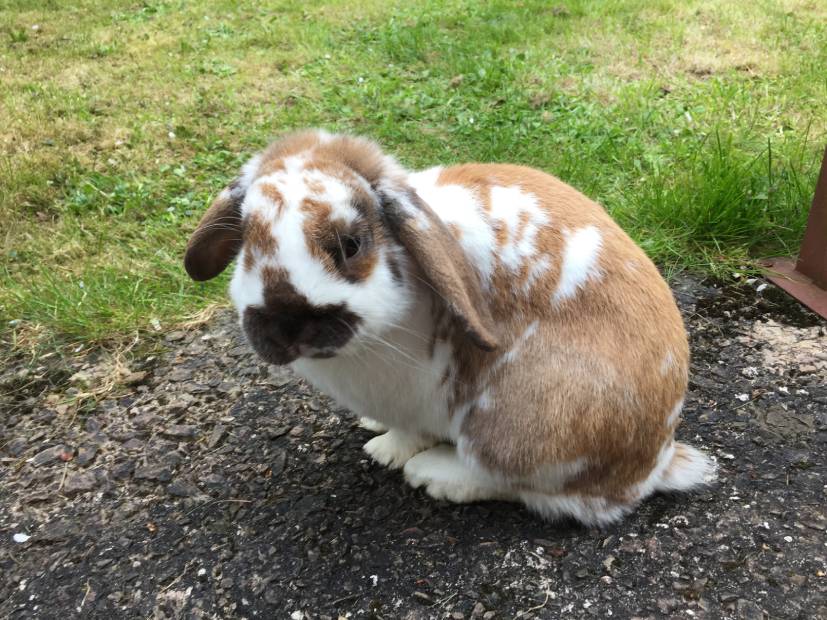
A lone rabbit is not necessarily unhappy, but he will require plenty of attention from his human. So, if you can’t adopt another rabbit, expect your pet to demand more attention and prepare to do whatever you can to keep him company.
Here are some tips to make it happen:
- Give your rabbit a big and comfortable enclosure. Rabbits need a lot of space, even when they can’t be supervised.
- Take your rabbit out of his cage for at least an hour a day. Rabbits love to explore and sniff around. Take yours out of his cage and interact with him every day. However, be careful that it does not destroy your home. Watch him closely or use a special room for him, where there are no valuables or carpeting.
- Do not handle your bunny excessively. You might think it’s a good idea to hug your bunny and bond with him, but he’s unlikely to like it. Instead, lay your bunny on the ground and hang out with him. If he seems to be reacting positively, walk up and pet him. If the bunny does not like you being in his personal space, he will start to growl. Stand back a bit and give him time to approach you. If your bunny is shy, it may take a while for him to trust you. Be patient, and don’t give up!
- Pet your rabbit often. Rabbits enjoy being petted when they are resting after a meal. Gently approach and stroke his forehead, cheek, or back. Keep in mind that rabbits do not like having their ears, stomach, tail, neck, or feet stroked.
- Play with your bunny. Rabbits love to go out and play. They especially enjoy knocking over objects, digging, and throwing small toys. Buy toys or make them yourself. For example, you can give him hard baby toys or plastic balls with little bells inside. Often, a simple piece of cardboard, such as the cardboard tube inside a roll of toilet paper, is sufficient. If your rabbit likes to dig, give him a straw mat or cardboard filled with scraps of paper.

Final Thoughts
Rabbits are intelligent, social creatures who need to live with their peers to thrive. Introducing two rabbits together may not be easy at first, but with patience and a little skill, you will be rewarded with a happy and healthy little pair of bunnies.
Related Reads:
- 9 Signs That Your Rabbit May Be Dying (Vet Answer)
- Do Rabbits Fart? Our Vet Explains Gastrointestinal Facts & FAQ
Featured Image Credit: Purezba, Shutterstock
